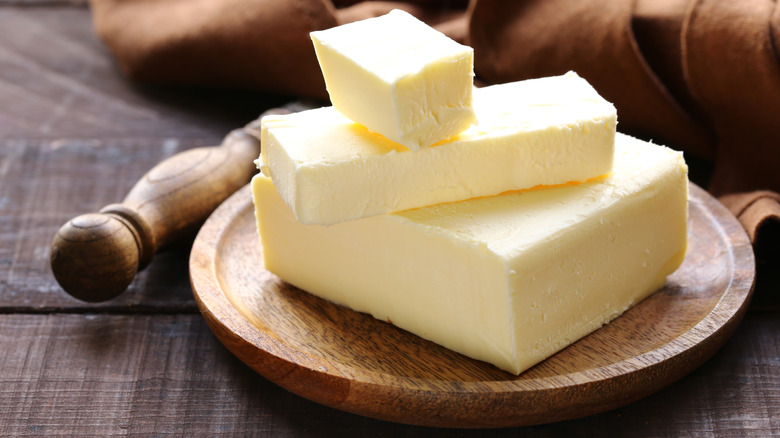The Science Behind Mixing Butter And Oil When Cooking
Let's face it, we all love butter. The fat is absolutely divine when spread on warm sourdough bread, folded into croissants, or spread over the top of waffles. And although you should definitely eat it in moderation, quality butter is full of nutrition! It is chock full of vitamin A, which is great for your skin and immune system, and vitamin E, which is good for your heart and cells, according to Healthline. But there is a downside too — butter has a low smoke point.
The smoke point is the temperature a fat can reach before it begins to burn and smoke (via Definitions). The fat will deteriorate after reaching this point and will lose its natural flavors and give your food an acrid taste. When we say that butter, no matter the quality, has a low smoke point, we mean that it is easy for the fat to start to burn while using it to cook.
Oil and butter are two peas in a pod
So, how do we keep the rich flavor of butter while cooking? The answer is in oil. Oil and butter are different things despite often being used for the same purpose. Oils have unsaturated fatty acids (that won't affect your cholesterol), are liquids at room temperature, are simpler at the chemical level, and also have a high smoke point (via Master Chemistry).
According to Bon Appétit, oil is a great base, but lacks any personality and flavor, so you wouldn't want to use it on its own when cooking. By mixing oil and butter together, you can increase the smoke point and the flavor. It really is the best of both worlds.
The fat in the butter will still burn eventually, but the oil will help to dilute the nasty burnt taste that we absolutely do not want in our food (via Serious Eats). Mixing these two ingredients together is especially important if you are looking to sear foods that need to brown up like steaks or roast chicken but still need that extra boost of flavor from the butter.

